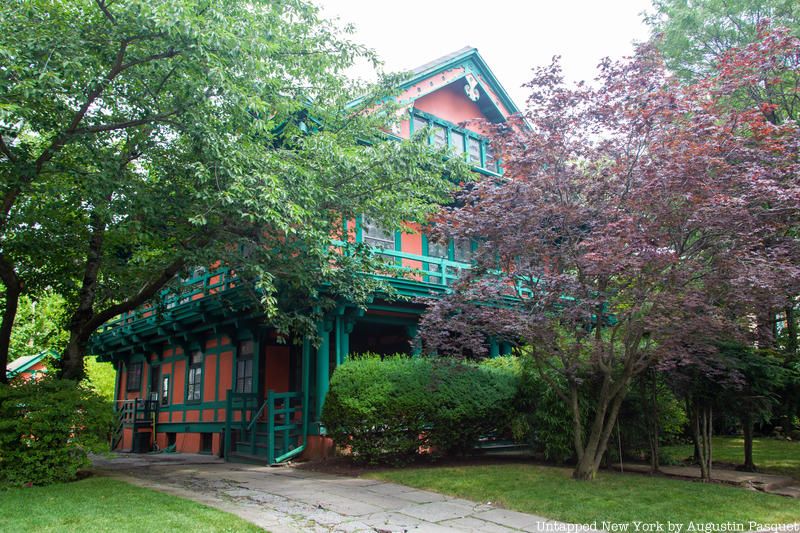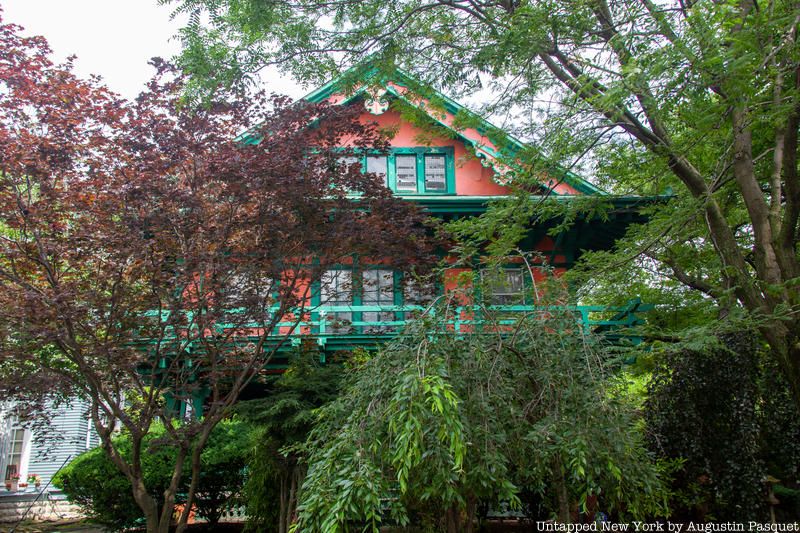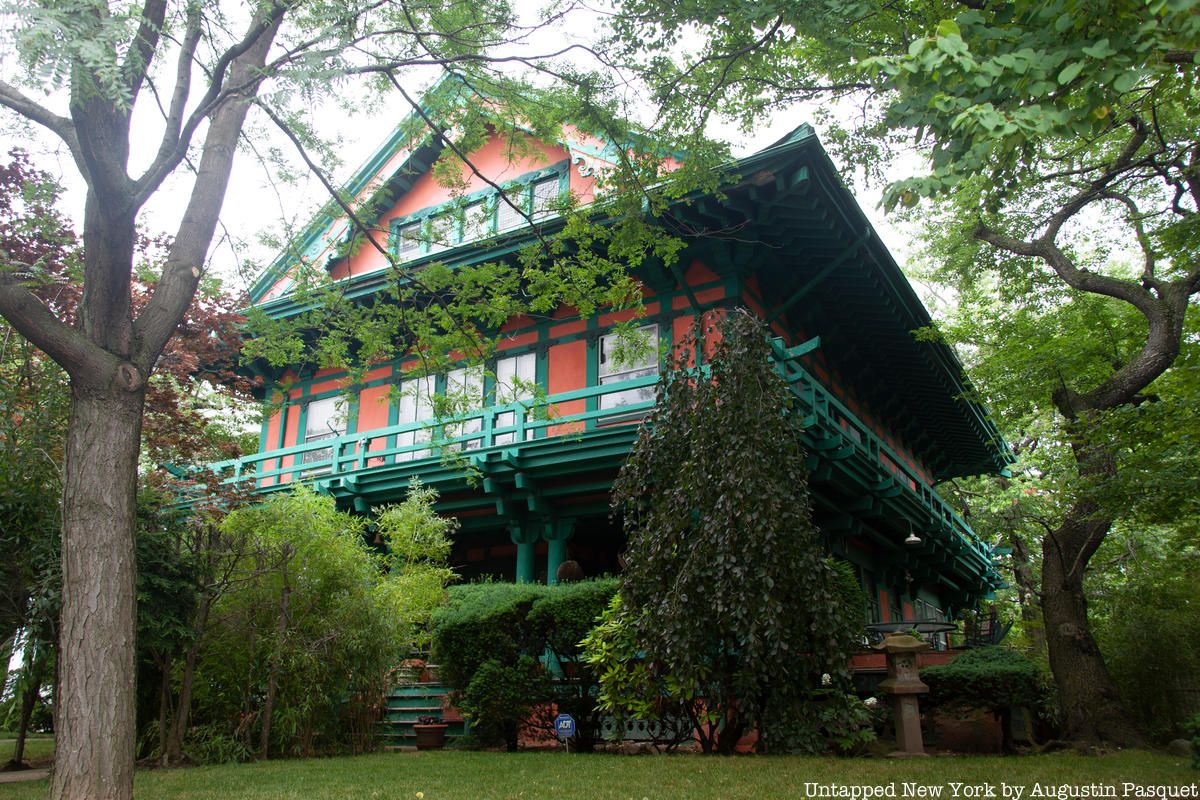Last-Minute NYC Holiday Gift Guide 🎁
We’ve created a holiday gift guide with presents for the intrepid New Yorker that should arrive just in time—


Urban legend tells that this Japanese house in Flatbush-Ditmas Park was built especially for the Japanese Ambassador, and it was shipped over piece by piece from Japan. Neither of those stories are true. What is true, however, is that someone lives in this Japanese style house south of Prospect Park at 131 Buckingham Road. It was built between 1902 and 1903 and as of this year is valued at over $2.1 million. In fact, since we last reported on the Japanese House in 2014, the home has increased in valuation by almost $750,000, according to New York City tax assessments for the property.
For those unfamiliar with Flatbush and Prospect Park South, the number of detached Victorian mansions may come as a surprise. But even for the more acquainted, the presence of a Japanese house is still extraordinary. The Frederick and Loretta Kohle House, more popularly referred to as the “Japanese House” dates to 1902-1903. The entire area was a speculative real estate endeavor by Dean Alvord, who wanted to build a suburban-style enclave to prove that rural beauty could be possible in an urban, street grid context. Alvord is also responsible for the British-influenced street names in the neighborhood, renaming existing roads to Buckingham, Westminster, Albemarle and more.

Residential architecture in America in the late 19th and early 20th centuries was heavily influenced by the success of the Japanese pavilion at the World’s Columbian Exhibition in Chicago in 1893. The mansions of the elite were decorated with “Oriental rooms,” filled with items imported from Asia. But here in Flatbush, an entire Japanese-style house was built as an advertising and marketing initiative. Though it had success in the press, the house was ultimately sold to Dr. Frederick Kohle in 1906 at below cost. No other Japanese houses were built here in Flatbush-Ditmas Park.
Today, however, the Japanese house is certainly one of the most unique discoveries in the residential neighborhood. In 1997, the New York Times called it “perhaps New York’s most unusual residence.” There have been many myths about the house over the years, including that it was built by the Japanese consul to the United States and that it was shipped piece by piece from Japan. None of them are true. The house was designed by John J. Petit, of the firm Kirby, Petit & Green, notable for their work on Dreamland in Coney Island.

Dr. Frederick Kohle purchased the Japanese house for $26,000. The current owners, Gloria and Albert Fischer, purchased the home in 1972 for a reported $80,000. It sits on a quarter acre property. The Fishers restored the house to its original green and orange paint scheme. The ground floor, apart from the kitchen, is in the same form it was in when the house was built. The stained glass windows, both on the exterior and within the house, still exist, as well as the original woodwork.
[post_featured_tour]
The Japanese influence can be felt through the structure of the interior, but less from the materials chosen. As such, the design preferences of the American elite at the time were melded with an outside influence. According to Andrew Dolkart, who wrote the Landmarks Preservation designation report for Prospect Park South, “the roof of the house seems to have originally been covered with Japanese-style tile.” A Japanese maple tree and other plantings in the landscape design add to the uniqueness of this property in Victorian Flatbush.

“I did the Flatbush Victorian mansions tour with a side of Flatbush Dutch history and boy, was it fascinating! I live in the area and pass most of these structures but had no idea of their grand history over time. The mansions themselves are truly spectacular and any architectural lover or nerd would love them, as well as history buffs. Definitely worth it.” – Kemi on Tripadvisor
“Very enjoyable and informative walk around a beautiful neighborhood I would guess even many long time New Yorkers are unaware of. Jeremy our guide was very knowledgeable and fielded dozens of questions. Little headsets enabled us to hear his narration clearly, even on streets with a lot of traffic noise, and maintain social distance from each other.” – Paolo T. on Tripadvsor
Subscribe to our newsletter